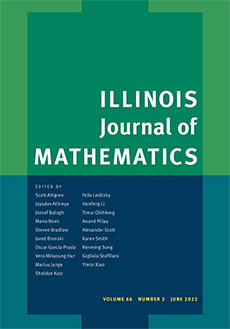Abstract
A standard formula (1.1) leads to a proof of HT90, but requires proving the existence of $\theta$ such that $\alpha\ne0$, so that $\beta=\alpha/\sigma(\alpha)$.
We instead impose the condition (M), that taking $\theta=1$ makes $\alpha=0$. Taking $n=3$, we recover Shanks’s simplest cubic fields. The “simplest” number fields of degrees $3$ to $6$, Washington’s cyclic quartic fields, and a certain family of totally real cyclic extensions of $\mathbb{Q} (\cos(\pi/4m))$ all have defining polynomials whose zeroes satisfy (M).
Further investigation of (M) for $n=4$ leads to an elementary algebraic construction of a $2$-parameter family of octic polynomials with “generic” Galois group ${}_{8}T_{11}$. Imposing an additional algebraic condition on these octics produces a new family of cyclic quartic extensions. This family includes the “simplest” quartic fields and Washington’s cyclic quartic fields as special cases.
We obtain more detailed results on our octics when the parameters are algebraic integers in a number field. In particular, we identify certain sets of special units, including exceptional sequences of $3$ units, and give some of their properties.
Citation
Kurt Foster. "HT90 and “simplest” number fields." Illinois J. Math. 55 (4) 1621 - 1655, Winter 2011. https://doi.org/10.1215/ijm/1373636699
Information





